Step-by-step
- Download XAMPP for Windows. Browse to www.apachefriends.org/en/xampp.html and click XAMPP for Windows.

- Scroll down to Download section, there are 3 formats which you can choose to download. In this example, I select ZIP format.

- Unzip
the file into the folder of your choice. If you extract XAMPP in a top
level folder like “C:\” or “D:\”, you can skip to step 5. Otherwise, you
have to run “setup_xampp.bat” in \xampp folder. In this example, I
extract to C:\ so I can skip to step 5.

- Here is the screenshot of the execution of file setup_xampp.bat.

- Open XAMPP Control Panel by right-click on xampp-control.exe and select Run as administrator.
Note: If you’re using Windows XP, you just double-click on the file.

- On XAMPP Control Panel Application, select Svc checkbox of Apache and click OK. This will install Apache as a service on this computer.

- Click Start to start Apache web server.

- Repeat step 6-7 on MySQL. Now Apache and MySQL are installed as Windows services and already started.
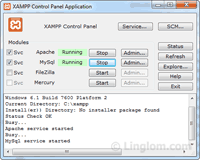
- You can check if the services are really installed on the computer by click SCM.
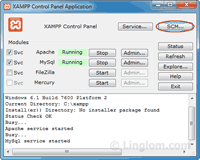
- On Services, you will see Apache and MySQL services are started and startup type are set to Automatic which means that services will be started automatically when the computer starts.
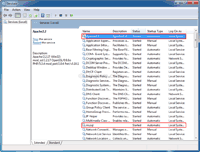
- Now
it’s time to test, browse to “http://localhost” or “http://127.0.0.1″.
You will see the screen as below. This is XAMPP’s splash screen, select English language.
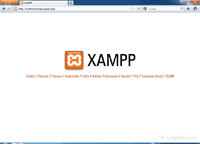
- Here
is the XAMPP’s main page. You can view other pages using navigation
menu on the left side. For example, XAMPP’s status to see which
components are running, security page to view current security
configuration of the XAMPP installation, etc.
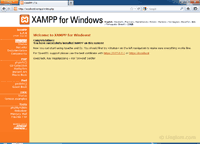
- The
main directory for all WWW documents is \xampp\htdocs. If you put a
file “test.html” in this directory, you can access it with the URI
“http://localhost/test.html”.
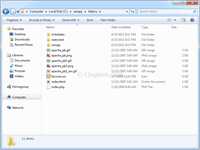
- You
can manage MySQL using phpMyAdmin by browse to
“http://localhost/phpmyadmin” or you can select phpMyAdmin link on the
XAMPP’s main page (in Tools section).
Note: By default, the root’s password is empty (blank password).
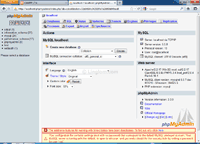
more details click














0 comments:
Post a Comment